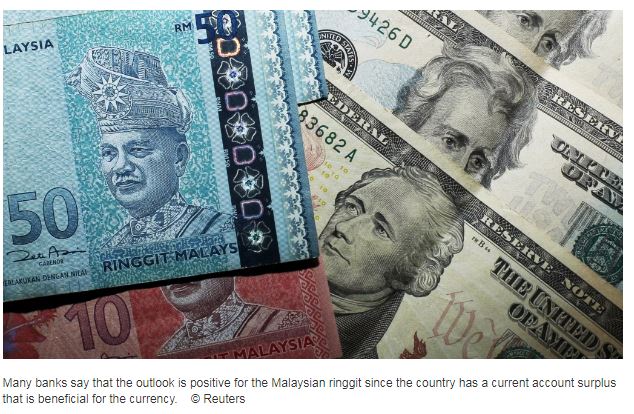Focus on fundamentals could help ASEAN currencies
SINGAPORE (Nikkei Markets) — Southeast Asian currencies have had a rough year so far but the pressure on them could ease in coming months as trade tensions settle, returning focus to the region’s strong growth prospects and the fundamentals weighing on the U.S. dollar.
Many banks say that the outlook is positive for the Singapore dollar, the Malaysian ringgit and the Thai baht since the three countries all have a current account surplus that is beneficial for their currencies.
However, banks are divided about the prospects for the Indonesian rupiah and are generally negative about the Philippine peso.
Credit Suisse believes a full-fledged trade war between the U.S. and its trading partners is unlikely since further escalation would cause businesses to defer investments and close plants, hurting prospects for President Donald Trump’s supporters in Congress during the upcoming mid-term elections. Besides China, the U.S. is also embroiled in spats with Canada, Mexico and the European Union.
“We do believe that after the illiquid summer months (of July and August) have passed, we are likely to see a reversion,” John Wood, the Swiss bank’s chief investment officer for Asia Pacific, said at a briefing Monday.
Credit Suisse said the pace of global economic growth is picking up after a weak first quarter. The bank cited stronger than expected purchasing managers’ index readings in the U.S., China and EU.
As for the U.S., the worsening trade and government deficit could again start to weigh on the greenback and drive funds back to Southeast Asian countries, Credit Suisse added.
The dollar’s uptrend since early this year has been mainly due to rising U.S. interest rates and a flow of funds into safer assets as institutional investors, concerned about Trump’s trade policies, fled emerging markets, including those in the Association of Southeast Asian Nations.
Last week, the Trump administration imposed tariffs on $34 billion worth of Chinese goods, prompting China to retaliate with similar duties on U.S. products.
Malaysian lender CIMB said central banks in the ASEAN region have raised, or are likely to raise, interest rates, giving a lift to their currencies. While external debt exposure has risen in countries like Malaysia and Thailand, their international reserve buffers remain sufficient to tolerate bouts of financial volatility, it added.
Both CIMB and Credit Suisse expect the Singapore dollar to strengthen from its current 1.37 level against the U.S. dollar, aided by the central bank’s stance of allowing a slight appreciation in the local currency’s nominal effective exchange rate. The greenback was worth around 1.33 Singapore dollars at the beginning of the year.
Credit Suisse expects the local currency to hit 1.31 in the next 12 months while CIMB expects it at 1.32 by June 2019.
The Swiss bank’s target for the Malaysian ringgit is 3.95 to the dollar from 4.05 currently, while that of CIMB is 3.85.
“The growth outlook (for Malaysia) remains intact as stimulus to consumers makes up for cutbacks in government spending and infrastructure work,” CIMB said.
Turning to Indonesia, Credit Suisse and CIMB expect the rupiah to strengthen over the next year, following a decline of around 6% since the start of the year. But some other banks, including DBS Group Research and Oversea-Chinese Banking Corp., expect the rupiah to fall further, albeit at a slower pace due to the central bank’s efforts to defend the currency.
DBS, Singapore’s largest lender, forecasts the rupiah will fall to 14,700 to the U.S. dollar from current levels of 14,415.
DBS said Indonesia’s problems included higher commodity prices and strong capital imports that will worsen the current account deficit. However, Indonesian interest rates have risen to levels that will attract local investors, helping stem outflows, the bank said.
The rupiah’s weakness could also have a serious impact on Indonesian companies, which tend to have high levels of borrowing.
According to ratings agency Moody’s Investors Service, most Southeast Asian high-yield borrowers are hedged against foreign currency risks. The exceptions include Indonesian companies such as MNC Investama, Gajah Tunggal, Lippo Karawaci and Alam Sutera Realty.
As for the Philippines, Credit Suisse said there were doubts about the central bank’s willingness to support the peso, which is currently trading around 53.3 to the dollar. The peso has fallen some 6.7% since the start of the year.
–Kevin Lim
Source: https://asia.nikkei.com/Business/Markets/Nikkei-Markets/Focus-on-fundamentals-could-help-ASEAN-currencies


 Thailand
Thailand




